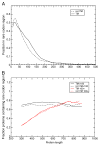Manipulating the genetic code for membrane protein production: what have we learnt so far?
- PMID: 21884679
- PMCID: PMC3288168
- DOI: 10.1016/j.bbamem.2011.08.018
Manipulating the genetic code for membrane protein production: what have we learnt so far?
Abstract
With synthetic gene services, molecular cloning is as easy as ordering a pizza. However choosing the right RNA code for efficient protein production is less straightforward, more akin to deciding on the pizza toppings. The possibility to choose synonymous codons in the gene sequence has ignited a discussion that dates back 50 years: Does synonymous codon use matter? Recent studies indicate that replacement of particular codons for synonymous codons can improve expression in homologous or heterologous hosts, however it is not always successful. Furthermore it is increasingly apparent that membrane protein biogenesis can be codon-sensitive. Single synonymous codon substitutions can influence mRNA stability, mRNA structure, translational initiation, translational elongation and even protein folding. Synonymous codon substitutions therefore need to be carefully evaluated when membrane proteins are engineered for higher production levels and further studies are needed to fully understand how to select the codons that are optimal for higher production. This article is part of a Special Issue entitled: Protein Folding in Membranes.
Copyright © 2011 Elsevier B.V. All rights reserved.
Figures



Similar articles
-
The Yin and Yang of codon usage.Hum Mol Genet. 2016 Oct 1;25(R2):R77-R85. doi: 10.1093/hmg/ddw207. Epub 2016 Jun 27. Hum Mol Genet. 2016. PMID: 27354349 Free PMC article. Review.
-
A Code Within a Code: How Codons Fine-Tune Protein Folding in the Cell.Biochemistry (Mosc). 2021 Aug;86(8):976-991. doi: 10.1134/S0006297921080083. Biochemistry (Mosc). 2021. PMID: 34488574 Free PMC article. Review.
-
Widespread position-specific conservation of synonymous rare codons within coding sequences.PLoS Comput Biol. 2017 May 5;13(5):e1005531. doi: 10.1371/journal.pcbi.1005531. eCollection 2017 May. PLoS Comput Biol. 2017. PMID: 28475588 Free PMC article.
-
Case for the genetic code as a triplet of triplets.Proc Natl Acad Sci U S A. 2017 May 2;114(18):4745-4750. doi: 10.1073/pnas.1614896114. Epub 2017 Apr 17. Proc Natl Acad Sci U S A. 2017. PMID: 28416671 Free PMC article.
-
A code within the genetic code: codon usage regulates co-translational protein folding.Cell Commun Signal. 2020 Sep 9;18(1):145. doi: 10.1186/s12964-020-00642-6. Cell Commun Signal. 2020. PMID: 32907610 Free PMC article. Review.
Cited by
-
Preparation of a Deuterated Membrane Protein for Small-Angle Neutron Scattering.Methods Mol Biol. 2021;2302:219-235. doi: 10.1007/978-1-0716-1394-8_12. Methods Mol Biol. 2021. PMID: 33877630
-
Optogenetic Monitoring of Synaptic Activity with Genetically Encoded Voltage Indicators.Front Synaptic Neurosci. 2016 Aug 5;8:22. doi: 10.3389/fnsyn.2016.00022. eCollection 2016. Front Synaptic Neurosci. 2016. PMID: 27547183 Free PMC article. Review.
-
Improving heterologous membrane protein production in Escherichia coli by combining transcriptional tuning and codon usage algorithms.PLoS One. 2017 Sep 13;12(9):e0184355. doi: 10.1371/journal.pone.0184355. eCollection 2017. PLoS One. 2017. PMID: 28902855 Free PMC article.
-
mRNA-programmed translation pauses in the targeting of E. coli membrane proteins.Elife. 2014 Aug 18;3:e03440. doi: 10.7554/eLife.03440. Elife. 2014. PMID: 25135940 Free PMC article.
-
Evolutionary analysis of polyproline motifs in Escherichia coli reveals their regulatory role in translation.PLoS Comput Biol. 2018 Feb 1;14(2):e1005987. doi: 10.1371/journal.pcbi.1005987. eCollection 2018 Feb. PLoS Comput Biol. 2018. PMID: 29389943 Free PMC article.
References
-
- Crick FH, Barnett L, Brenner S, Watts-Tobin RJ. General nature of the genetic code for proteins. Nature. 1961;192:1227–1232. - PubMed
-
- Ikemura T. Codon usage and tRNA content in unicellular and multicellular organisms. Mol Biol Evol. 1985;2:13–34. - PubMed
-
- Chen D, Texada DE. Low-usage codons and rare codons of Escherichia coli. Gene Ther Mol Biol. 2006;10:1–12.
Publication types
MeSH terms
Substances
Grants and funding
LinkOut - more resources
Full Text Sources
Other Literature Sources

